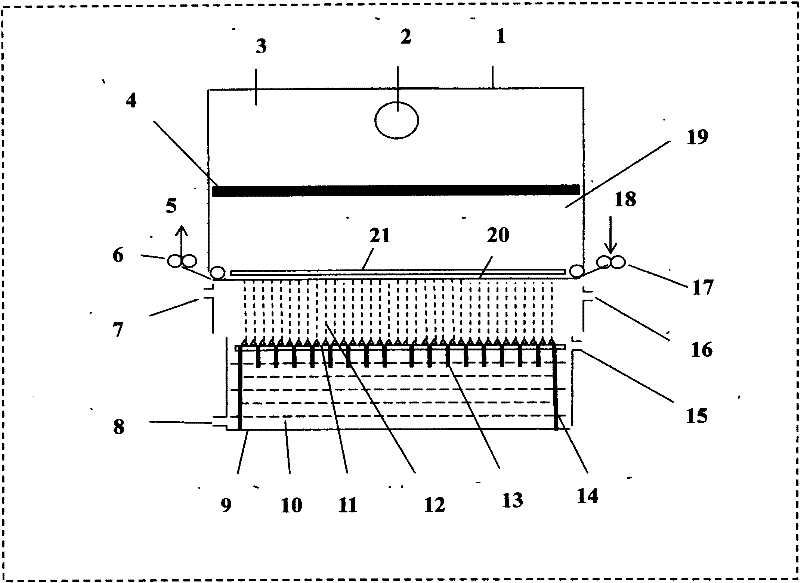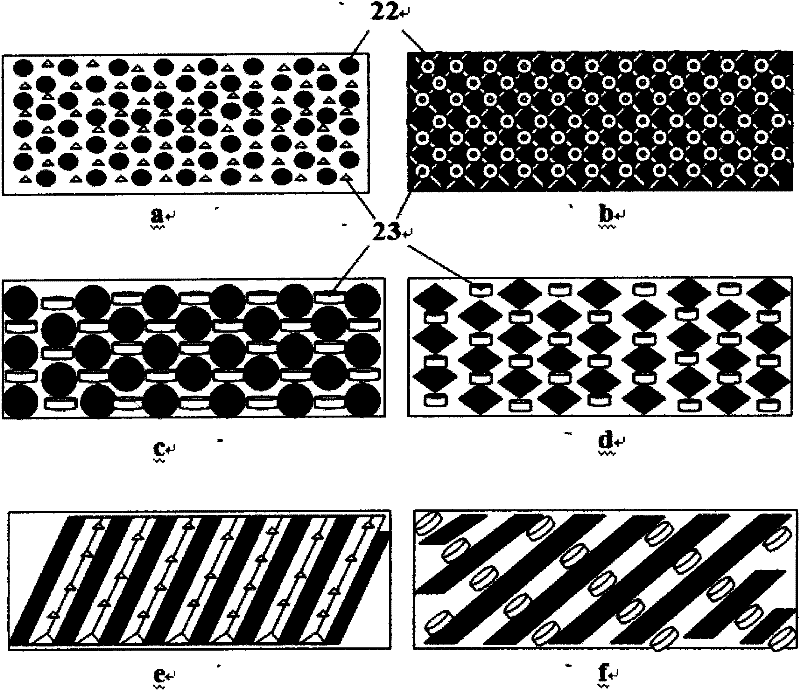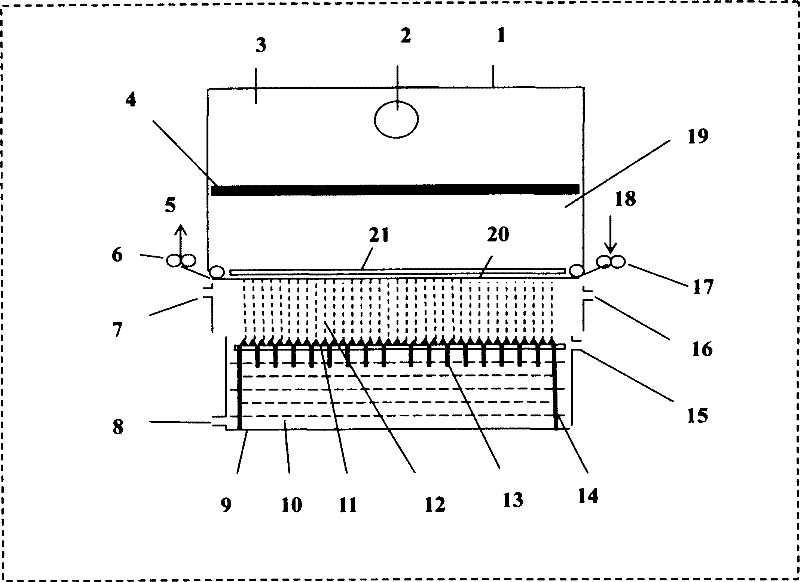Continuous mass production method and continuous mass production equipment for electrospun nanofiber membranes
An electrospinning nanofiber, mass production technology, applied in fiber processing, textiles and papermaking, non-woven fabrics, etc., can solve problems such as easy blockage of capillaries, droplets splashing on fiber receiving nets, and inability to realize industrialized production of nanofibers, etc. Achieve the effect of improving uniformity and productivity and overcoming electrostatic repulsion
- Summary
- Abstract
- Description
- Claims
- Application Information
AI Technical Summary
Problems solved by technology
Method used
Image
Examples
Embodiment 1
[0037] Using polyvinylidene fluoride as the solute, dimethylformamide and acetone as the solvent, make a polymer solution with a mass concentration of 7%, and put it into figure 1container 9 in the device. The polymer solution flows into the container 9 through the inlet 8, and flows out through the outlet 15, so that the level of the polymer solution 10 in the container 9 is maintained by using the position of the outlet 15, and the charged electrode 11 is controlled by figure 2 The porous metal plate in the embodiment of d is composed, and it vibrates horizontally at a frequency of 0.2HZ, and the amplitude is 5cm. The charged electrode 11 is connected to a 35 kV DC voltage source, and the device follows the figure 1 Manufactured and placed in it is a gas-permeable continuous receiving web 20 which is drawn close to the counter electrode 21 due to the low pressure in the negative pressure chamber 19 behind the gas-permeable counter electrode 21, thus forming a continuous re...
Embodiment 2
[0039] Using polyvinylidene fluoride as the solute, dimethylformamide and acetone as the solvent, make a polymer solution with a mass concentration of 8%, and put it into figure 1 container 9 in the device. The polymer solution flows into the container 9 through the inlet 8, and flows out through the outlet 15, so that the level of the polymer solution 10 in the container 9 is maintained by using the position of the outlet 15, and the charged electrode 11 is controlled by figure 2 The expanded metal in the embodiment of b is composed, and it vibrates horizontally at a frequency of 1kHZ with an amplitude of 4mm. The charged electrode 11 is connected to a 50 kV DC voltage source, and the device follows the figure 1 Manufactured and placed in it is a gas-permeable continuous receiving web 20 which is drawn close to the counter electrode 21 due to the low pressure in the negative pressure chamber 19 behind the gas-permeable counter electrode 21, thus forming a continuous receivi...
PUM
 Login to View More
Login to View More Abstract
Description
Claims
Application Information
 Login to View More
Login to View More - R&D
- Intellectual Property
- Life Sciences
- Materials
- Tech Scout
- Unparalleled Data Quality
- Higher Quality Content
- 60% Fewer Hallucinations
Browse by: Latest US Patents, China's latest patents, Technical Efficacy Thesaurus, Application Domain, Technology Topic, Popular Technical Reports.
© 2025 PatSnap. All rights reserved.Legal|Privacy policy|Modern Slavery Act Transparency Statement|Sitemap|About US| Contact US: help@patsnap.com



